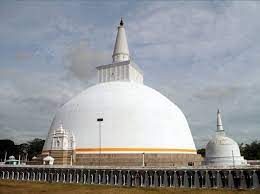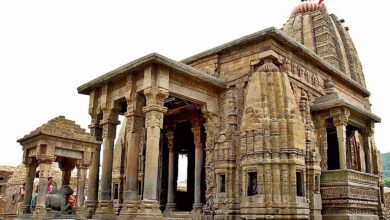Stupa of Importance: Ruwanweli Maha Seya
The renowned stupa known as the Ruwanwelisaya, often referred to as the Ruwanweli Maha Seya, is situated in Anuradhapura, Sri Lanka. It is of great historical, cultural, and religious importance to the Sri Lankan people and is an impressive example of prehistoric architecture and technical skill. This revered building embodies the rich spiritual history of the nation and stands as a testament to dedication, harmony, and the ongoing influence of Buddhism.
A significant figure in Sri Lankan history, King Dutugemunu, oversaw the construction of the Ruwanwelisaya. In an attempt to honor Lord Buddha and promote Buddhist traditions in the area, the stupa was constructed in the second century BC. The monarch was motivated to construct the stupa by his desire to thwart foreign invasions and to bring the divided kingdom together under a shared religious and cultural identity.
The stupa’s building is a masterpiece of prehistoric engineering. The stupa’s main dome has a circumference of around 338 feet (103 meters) and rises to a height of 300 feet (91 meters). Bricks are precisely arranged in layers and then used to build the dome. The stupa’s structural soundness and visual appeal are further enhanced by the use of terracotta tiles, clay, and lime mortar. Both tourists and architects are enthralled by the majesty and splendor of the Ruwanwelisaya’s architecture.
A circular terrace surrounds the stupa, offering worshippers a place to conduct religious ceremonies and activities. Stone pillars and guardstones that are artistically carved with a variety of patterns and motifs decorate the terrace. These decorative elements illustrate tales from Buddhist texts and add to the site’s spiritual ambience.
A golden spire, known as a “Kotha,” caps the stupa at its highest point. The Kotha represents the peak of spiritual achievement and is adorned with countless diamonds and beautiful workmanship. The escape from suffering that is the ultimate aim of Buddhist meditation is symbolized by this crowning diamond.
The stupa is often circled by devotees and guests in a clockwise orientation, a ritual known as “pilgrimage.” Buddhists use this ceremonial walk to express respect for Lord Buddha’s teachings and to represent the path to enlightenment. The route for the circumambulation is paved and dotted with a variety of booths and shrines where worshippers may make offerings of flowers, light candles, and practice meditation and prayer.
Additionally, the Ruwanwelisaya is a vital component in regional religious celebrations and festivals. The “Esala Perahera,” a large parade with traditional dancers, drummers, and elephants with ornate decorations, is the most important of them. The procession ends in a stupa where Lord Buddha’s relics are on display, drawing large crowds of both pilgrims and visitors.
Due to the passage of time, weathering, and historical occurrences, the Ruwanwelisaya has experienced several reconstructions and restorations. In addition to preserving the stupa’s physical structure, these repair efforts symbolize Sri Lankans’ steadfast loyalty to their shared cultural and religious heritage.
The Ruwanwelisaya is a grand representation of Sri Lanka’s artistic and spiritual tradition. Its creation is a testament to King Dutugemunu and his subjects’ unshakeable trust in their commitment to the unity and values of Buddhism. The stupa, a magnificent work of architecture that still evokes awe and respect, acts as a link between the past and the present and aids people in achieving spiritual enlightenment. The Ruwanwelisaya is a genuine masterpiece of human endeavor and dedication because of its enduring relevance, which cuts beyond boundaries and civilizations.






